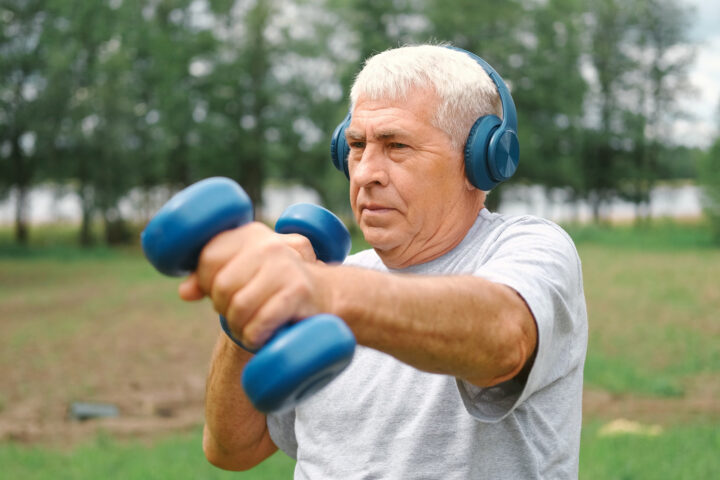As the years pass, many notice subtle changes—a bit more effort required to climb stairs, a slight decrease in strength when lifting groceries, or perhaps a longer recovery time after physical activities. These signs often point to a common yet underappreciated aspect of aging: sarcopenia, the gradual loss of muscle mass and strength. This condition doesn’t just affect physical capabilities; it has profound implications for overall health and independence in older adults.
Unmasking Sarcopenia: The Stealthy Progression
Sarcopenia, derived from the Greek words “sarx” (flesh) and “penia” (loss), refers to the age-related decline in muscle mass and function. Research indicates that muscle loss can begin as early as the third decade of life, with a more pronounced decline after the age of 60. By the time individuals reach their 80s, they may have lost up to 50% of their muscle mass (Aging Research).
This muscle deterioration isn’t merely a cosmetic concern. Reduced muscle strength increases the risk of falls, fractures, and a decline in the ability to perform daily activities, leading to a loss of independence. Moreover, sarcopenia is associated with metabolic issues, including insulin resistance and obesity, further complicating health outcomes.
The Science Behind Muscle Decline
Several factors contribute to sarcopenia:
- Hormonal Changes: Aging is accompanied by a decline in anabolic hormones such as testosterone and growth hormone, which play crucial roles in muscle protein synthesis.
- Neuromuscular Alterations: There’s a reduction in the number and function of motor neurons, leading to decreased muscle fiber activation and atrophy.
- Protein Metabolism: The balance between muscle protein synthesis and breakdown shifts unfavorably with age, resulting in net muscle loss.
- Inflammation: Chronic low-grade inflammation, often termed “inflammaging,” accelerates muscle degradation.
- Lifestyle Factors: Physical inactivity and inadequate nutrition exacerbate muscle loss.
Spotlight on Recent Research: Unveiling New Insights
Advancements in research have shed light on the mechanisms of sarcopenia and potential interventions:
- Genetic Discoveries: A study published in Nature Metabolism identified specific genes linked to muscle aging and sarcopenia. Researchers found that certain genetic expressions influence muscle mass and function, offering potential targets for therapeutic interventions (News Medical).
- Nutritional Compounds: Another intriguing study highlighted the role of trigonelline, a compound found in coffee beans and peas, in slowing muscle deterioration. Experiments demonstrated that trigonelline boosts levels of NAD+, a molecule vital for cellular energy production, thereby improving muscle strength and reducing fatigue (The Sun)
- Pharmacological Interventions: The drug rapamycin, known for its immunosuppressive properties, has garnered attention for its potential anti-aging effects. By inhibiting the mTOR pathway, rapamycin may reduce inflammation and enhance autophagy, processes beneficial for muscle maintenance. However, its use is accompanied by side effects, and more research is needed to confirm its efficacy in humans (New York Post).
Empowering Through Lifestyle: The Role of Exercise and Nutrition
While scientific advancements are promising, lifestyle modifications remain the cornerstone of combating sarcopenia:
- Strength Training: Engaging in regular resistance exercises is paramount. Strength training not only preserves muscle mass but also enhances bone density and metabolic health. A sports-medicine doctor emphasizes the importance of learning how to lift weights to build and preserve muscle mass (Business Insider).
- Protein Intake: Adequate protein consumption is essential for muscle repair and growth. Older adults may require higher protein intake to counteract the decreased efficiency of protein utilization. Incorporating high-quality protein sources such as lean meats, dairy, legumes, and nuts can be beneficial.
- Vitamin D and Omega-3 Fatty Acids: These nutrients play supportive roles in muscle function. Vitamin D aids in calcium absorption and muscle strength, while omega-3 fatty acids possess anti-inflammatory properties that may protect against muscle loss.
The Interplay of Mind and Muscle: Cognitive Connections
Emerging research suggests a bidirectional relationship between muscle health and cognitive function:
- Neuromuscular Training: Activities that combine physical and cognitive challenges, such as martial arts or dance, have been shown to improve both muscle strength and mental acuity. A study demonstrated that older adults participating in karate training experienced increased grip strength and improved balance, reducing the risk of falls (Wikipedia).
- Cognitive Engagement: Maintaining an active mind through learning new skills, social interactions, and mental exercises can positively influence physical health, creating a virtuous cycle of well-being.
Looking Ahead: The Future of Muscle Health in Aging
The battle against sarcopenia is multifaceted, involving genetics, lifestyle, and emerging therapies. As research progresses, personalized interventions tailored to individual genetic profiles and lifestyles may become the norm. Embracing a proactive approach—through regular exercise, balanced nutrition, and mental engagement—can empower individuals to maintain muscle health and enjoy a vibrant life well into their golden years.
Additional Sources
- Sarcopenia & Mobility – Alliance for Aging Research
- Researchers identify genes linked to muscle aging and sarcopenia
- From coffee to peas – the 4 ‘anti-ageing’ foods and drinks that could help keep your body young
- What is rapamycin? Devotees claim the drug can slow aging
- A sports-medicine doctor shares 3 things she does to maintain muscle and stay active as she grows older












